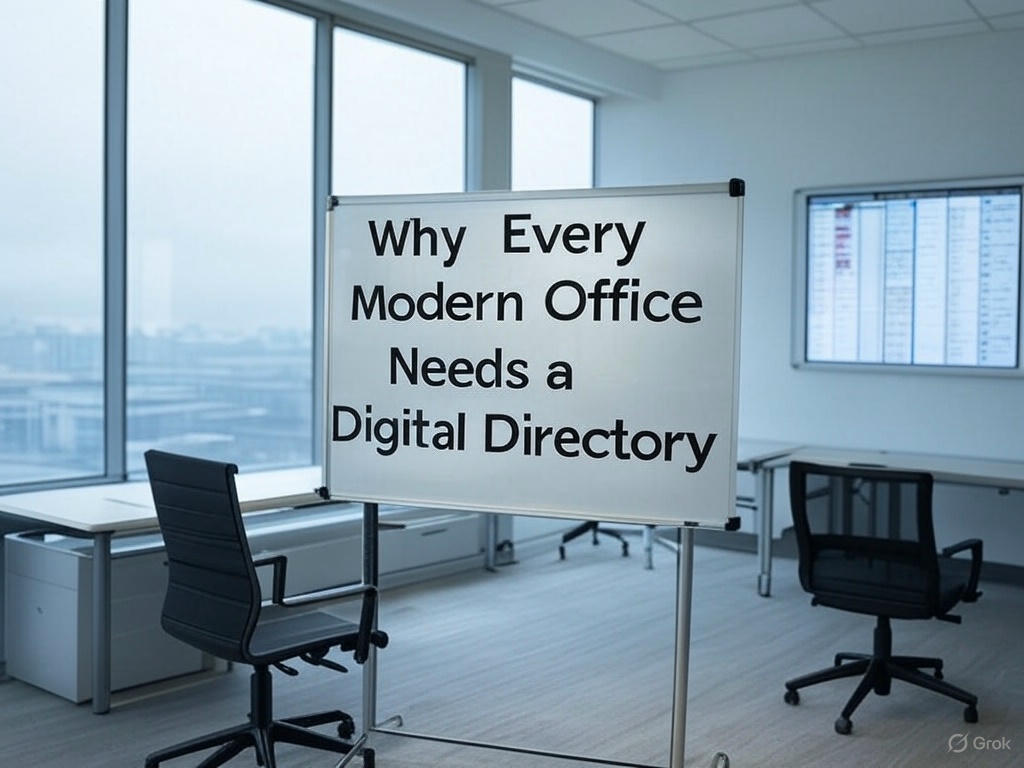Commercial real estate, where first impressions are paramount, digital directories have emerged as a transformative tool. These advanced systems not only enhance the aesthetic appeal of office buildings but also significantly improve the visitor experience.
The Evolution of Building Directories
From Static to Dynamic: A Paradigm Shift
Traditional static directories, once the norm in office lobbies, are increasingly being replaced by digital counterparts. This shift is driven by the need for real-time information, ease of updates, and interactive features that cater to the modern visitor’s expectations.
Defining the Digital Directory
A digital directory is an electronic display system that provides real-time information about building occupants, wayfinding, and other relevant details. These systems often feature touchscreens, interactive maps, and integration capabilities with other building management systems.
Enhancing Visitor Experience and Wayfinding
Streamlined Navigation
Digital directories offer intuitive interfaces that guide visitors seamlessly to their destinations. Interactive maps and search functionalities reduce confusion and enhance the overall visitor experience.
Real-Time Updates
Unlike static directories, digital systems can be updated instantly to reflect changes in tenant information or room assignments, ensuring visitors always have access to the most current data.
Accessibility Features
Modern digital directories often include features such as multilingual support and audio assistance, catering to a diverse range of visitors and ensuring inclusivity.
Operational Efficiency and Cost Savings
Reduced Administrative Burden
By automating the process of updating tenant information and wayfinding details, digital directories free up administrative staff to focus on other critical tasks.
Cost-Effective Over Time
While the initial investment in digital directory systems may be higher than traditional signage, the long-term savings from reduced printing costs and administrative labor can be substantial.
Integration with Building Systems
Digital directories can integrate with other building management systems, such as security and access control, providing a centralized platform for various operational functions.
Branding and Aesthetic Appeal
Modernizing Building Interiors
Digital directories contribute to a contemporary and professional building aesthetic, enhancing the overall perception of the property.
Customizable Interfaces
These systems can be tailored to reflect the building’s branding, including logos, color schemes, and promotional content, reinforcing brand identity.
Advertising Opportunities
Property owners can leverage digital directories for advertising purposes, offering space to tenants or local businesses and creating additional revenue streams.
Sustainability and Environmental Impact
Reduction in Paper Use
By eliminating the need for printed directories and signage, digital systems contribute to environmental sustainability efforts.
Energy Efficiency
Modern digital directories utilize energy-efficient technologies, such as LED displays, minimizing their environmental footprint.
Future-Proofing Commercial Properties
Scalability
Digital directory systems can be easily scaled to accommodate building expansions or increased tenant turnover, ensuring long-term viability.
Technological Advancements
As technology evolves, digital directories can be updated with new features and integrations, keeping the building’s infrastructure current and competitive.
Enhanced Data Analytics
These systems can collect data on visitor interactions, providing valuable insights into traffic patterns and user behavior, which can inform building management decisions.
Conclusion
Incorporating digital directories into office buildings is more than a technological upgrade; it’s a strategic investment in operational efficiency, visitor satisfaction, and long-term property value. As the commercial real estate landscape continues to evolve, embracing such innovations will be key to staying ahead in a competitive market.






